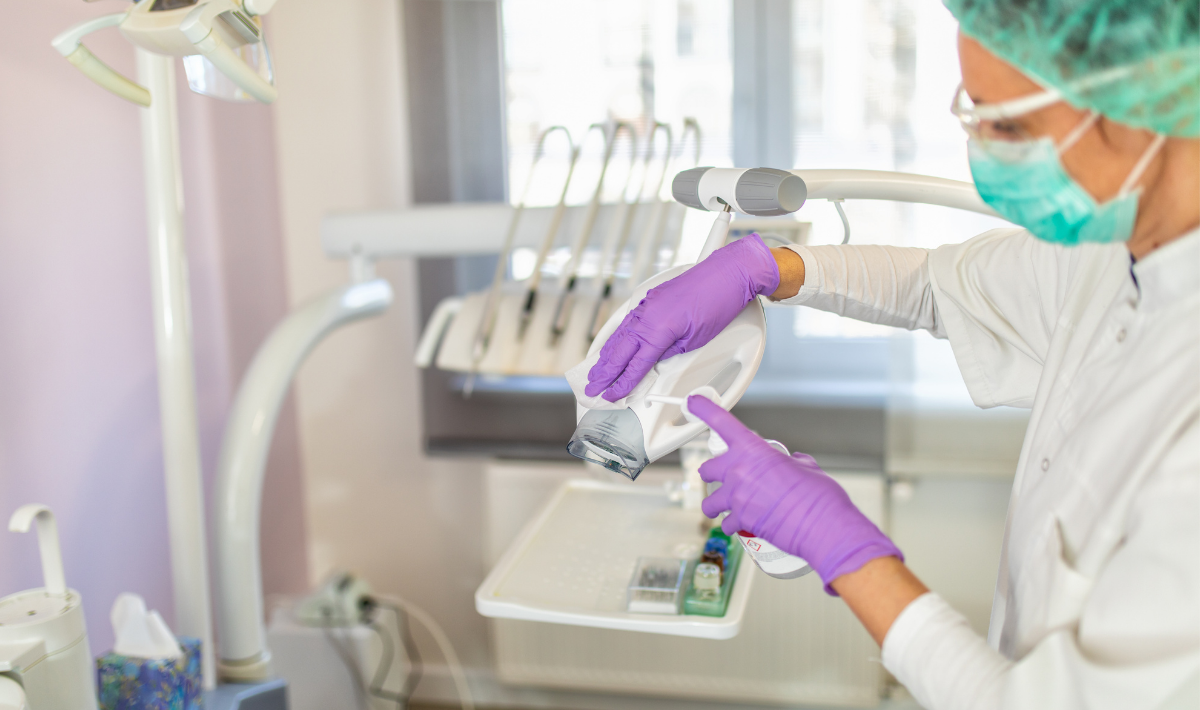By Dr. John Molinari and Peri Nelson
Editor’s note: In Best Practices in Infection Control, with THE DENTAL ADVISOR, Dr. John Molinari and Peri Nelson will address common concerns related to Infection control in dental practices. Questions can be submitted at dentaladvisor.com, under the Ask The Editors tab.
Q: I work in a large, busy practice where more than 200 patients are seen per day. It is difficult to get everyone on the same page in terms of infection control policies and procedures. There are a lot of team members cutting corners because we are so busy. We don’t have a set system and this concerns me. What do you suggest?
A: Having a documented infection control program is key for any practice, large or small. The key point is that all employees must adhere to clear guidelines that are written down, taught, and periodically reviewed as a team. When infection control procedures are improperly completed, it increases the risk of disease transmission. Have a meeting with personnel, discussing ways to complete tasks in an organized and efficient fashion, using products and equipment that work properly. If any confusion exists amongst team members, clarify as a group and periodically spot check that policies are being followed.
Q: I recently read about a new type of sterilizer that dries instruments quicker. Our autoclave is constantly on overload, and instruments come out wet at the end of the cycle. Are the new sterilizers better at drying instruments?
A: The traditional sterilizers were gravity sterilizers. Because air entering the chamber mixes with air, cool air pockets can form within the chamber, which may result in extended times for sterilization of certain items. In addition, overloading this type of autoclave can lead to incomplete drying of sterilized instrument packs, resulting in the user commonly finding wet packages at the end of the cycle. Development of a new generation of autoclaves within the last two decades has added a new dimension to this heat sterilization modality. These autoclaves are classified as “Class B” sterilizers or “pre- and post-vacuum” steam sterilizers. The equipment is fitted with a pump that creates an initial vacuum in the chamber to ensure air is removed from the sterilizing chamber before steam enters. In contrast to a gravity displacement autoclave, this procedure allows faster and more thorough steam penetration throughout the entire load. The post-sterilization vacuum cycle also is highly efficient because it facilitates drying. Practices that utilize this type of sterilizer frequently report the instrument packs are “bone dry” at the end of the sterilization process.
Dr. John Molinari and Peri Nelson train dental professionals worldwide on Infection control products and procedures. The course “What’s Bugging The Dentist?” is a popular hands-on, interactive program designed to assist in the selection, assessment, and use of infection control products in practice. Contact [email protected] to schedule your event.





